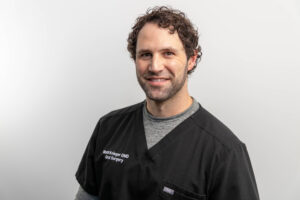Archived Newsletter Re-Post.
The AOX Newsletter • May 2024 #17
At the heart of any hospital based procedure is a pre-operative protocol that includes a “surgical time-out”. This is a brief but important time where everyone in the OR stops and confirms the patient and procedure, as well as the presence of pertinent surgical instrumentation and safety equipment. Any oral & maxillofacial surgeon is familiar with this process and the importance that it carries.
Those who have not operated in a hospital based setting, however, may not be familiar with this practice. And, even those that were once familiar with this habit, may have drifted from its ritualistic embrace.
I have heard more than one horror story through the AOX grapevine of complications and/or complete cancellations of surgeries (after the patient was already asleep) – that all could have been solved with a simple, concise, repeatable “AOX Surgical Time-Out”.
While not a groundbreaking theory, in my opinion, this practice is of vital importance. For those that perform this pre-operative routine – well done. For those that don’t – it would be wise to consider it.
I perform the following AOX Surgical Time-Out on each and every patient prior to the patient being administered any anesthesia.
Krieger’s AOX Surgical TIME-OUT
1. Patient Name and DOB
2. Confirmation of Procedure
3. Surgical & Anesthesia Consents Signed & Verified
4. Anesthesia H/P Completed
5. Medical History Reviewed
6. Allergies
7. Anesthesia Equipment Applied/Functioning
8. Suction & O2 Functioning
9. Any Additional Comments from Anesthesia?
10. Reduction Measurements & VDO Recorded
11. Surgical Guides are in the Operatory
12. Pre-Selected Implants Available and in the Operatory
13. Any Additional Surgical Instrumentation Anticipated?
Notes:
The procedure is confirmed with both the AOX team AND the patient.
The surgical “guides” referenced are “troughed duplicate dentures” (also known as non-restrictive surgical guides) – not traditional surgical guides.
Additional surgical instrumentation would be where I would indicate items specific to the case on hand, such as anticipated PRF, a pterygoid kit, graft material, etc.
The importance of a surgical time-out cannot be underestimated.
This simple pre-operative step ensures the surgeon, the patient, and the AOX team are all on the same page and prepared for the procedure at hand.
Simple. Repeatable. Priceless.
Sincerely,
Matthew Krieger DMD
P.S.
I actually print off, laminate, and place the above surgical time out up in my operatory so that my team and I can go through each check point together prior to surgery. This process takes about 30 seconds.
“Nothing is stronger than habit.”
Ovid
Q & A with Dr. K

“I don’t trust my assistants to load implants. I load all of my own. How did you develop this trust in them without having dropped implants?” |
If you allow your assistants to load implants, you will ABSOLUTELY have a few dropped implants while they are learning. This is no different than the dropped implants we had when we were learning. There is no debate that this skill takes practice. However, you have to make the decision as to whether you want to “control” this aspect of surgery or improve efficiency. You can’t have both. If you are the only one in your office that loads implants, you will certainly avoid any “temporary” increase in drop rate while someone else is learning. However, if you are willing to give up this control, at the potential cost of a few dropped implants, you can create 1-2 exceptional assistants that significantly increase your surgical efficiency. I choose the latter. And, yes – a couple of implants WILL be dropped while assistants are learning. But the time it saves in improved surgical efficiency and decreased long-term overhead is well worth it. And at this point, my assistants are FAR better at loading implants than I am. There is absolutely a higher probability I will drop an implant than they will. It may be hard to make this decision, or “investment”, early on. But once you do – I promise you, you will never go back to loading your own implants. |
Archived newsletters are released on a delayed timeline, a few months after the original publication. If you would like to receive these newsletters in real time please sign up here.

